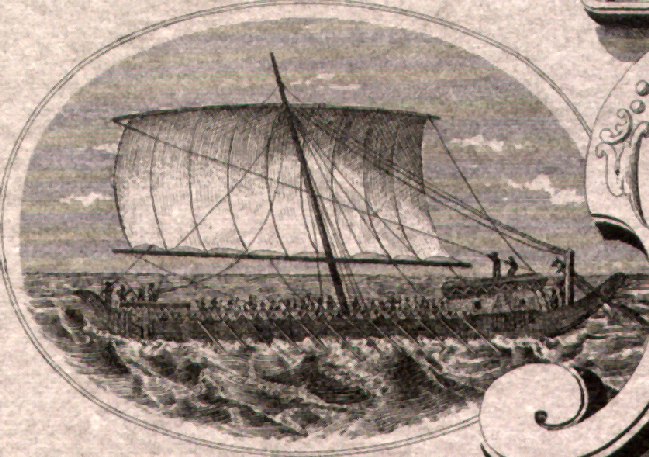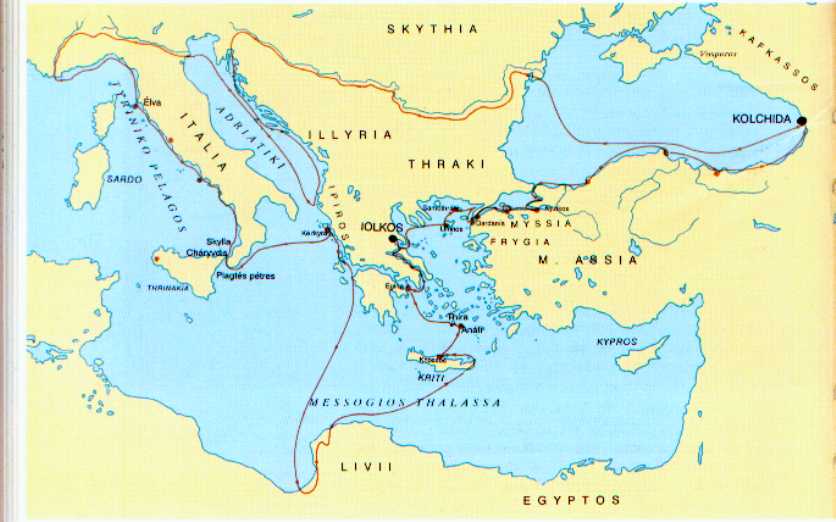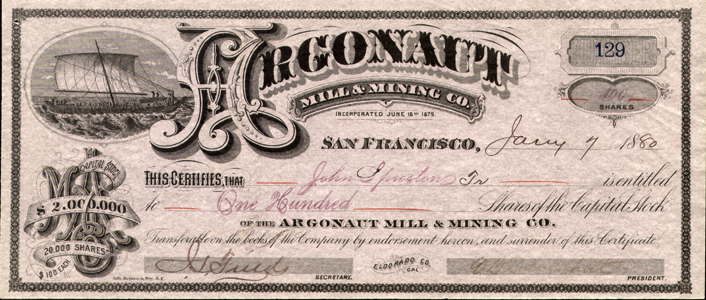
Dr. Hugo H. van der Molen - Wederikweg
114 - 9753 AE Haren, The Netherlands
Tel: +31 (0)50 534 8795; email:
[email protected]
Golden Fleece (NL: Gouden Vlies):
Through mediation of the God Hermes, Phrixus and Helle fled from their
father's and stephmother's court, in Boeotia, flying on a golden ram. As
they flew over Tracie, Helle leaned over and looked down, lost her balance
and fell, which is why that area of the sea has been called the Hellespont
(= where Helle drowned) ever since.
Phrixus arrived safely in Colchis were he offered the ram to Zeus and
gave the Golden Fleece to king Aeetes who had received him well. The precious
Golden Fleece was hung on an oak tree in the sacred grove of Ares, where
a fierce dragon kept perpetual guard over it.
Jason (NL: Iason):
When Jason's father had been thrown of his throne by his half brother
Pelias, he sent Jason to the wise Centaur Chiron, in order to raise the
boy in safety.
When Jason was twenty years of age he came to king Pelias in the city
of Iolcus and claimed the throne king Pelias had illegally taken from Jason's
father. As a ruse the king promised him the throne as soon as Jason would
bring him the famous Golden Fleece, owned by the king of Colchis.
Argo:
Jason ordered a ship to be built with 50 oars. The ship was so perfect
that it had in that time no match. The ship could actually talk and had
the gift of foreseeing, thanks to a piece of wood from the holy oak of
Dodone, a gift of the goddess Athena. The ship was very fast and was therfore
named Argo, argos being Greek for fast. It is depicted
on a certificate of the Argonaut Mill & Mining Co. (see below for more information).
Argonauts:
The crew of the Argo consisted of Greek hero's and even sons
of gods. The steersman was Tiphys. There were, amongst others, the musician
Orpheus, the seer Idmon, and Mopsus, Heracles, Hylas, Idas, Theseus, Peleus,
Amphiaraus from Argos, Acastus, Castor and Polydeuces (Pollux), Periclymenus
(son of Neleus), Peleas and his brother Telamon.

The voyage:
The voyage of the Argo is depicted
on a map, drawn according to the epic "Argonauts" by Apolloniusof Rhodos.
The first stop was on the isle of Lemnos, where the found only women as all men had been slaughtered earlier. The Argonauts lay with the women of the island and thus reintroduced a male element into the population.
Their next halt was Samotracie and after that they sailed through the Hellespont to arrive in Kyzikos, where they were received hospitably. When the time came for them to depart a head wind forced them back again and this time the people from Kyzikos mistook them for invaders and a fierce battle followed. When the mistake was discovered there was a reconciliation and the deaths were honoured on both sides.
Now the Argo sailed along the shores of Mysia, coming to the land where the soothsayer Phineas dwelt. They rid him of the Harpies, fierce birds that had stolen the food of the blind Phineas and who had left him almost starving, nearly to death. Out of gratitude he explained to them how they should try to sail through the Symplegades or "Clashing Rocks"
The Symplegades were two huge cliffs, reaching as high as the sky itself and not firmly fixed in the sea. Every so often they clashed together with such terrible speed and power, that they were certainly to crush any ship foolhardedly enough to venture between them. Phineas had advised the Argonauts to release a dove to fly between the rocks as to test the situation. The dove came through all right and only its tail was slightly harmed. The Argo thus got up as much speed as it possibly could and managed to pass between the Clashing Rocks losing only a small part of its stern. After that time the two rocks fused together and never moved again. Others say that the rocks moved outward once more and stayed still ever after.
When the Argo finally reached Colchis (at the east coast of the Black Sea), king Aeetes promised to give the companions the Golden Fleece, on condition that Jason first accomplished two difficult feats: first he had to yoke two fire breathing bulls with bronze hooves, and then he was to sow dragon's teeth in a field and deal with the armed warriors who would spring up like plants.
In performing these feats he was helped by Medea, the king's daughter and a sorceress, who had fallen in love with Jason. And when the king finally denied Jason the Golden Fleece, thus going back on his word, she helped him to steal it, by setting a charm of sleep on the dragon.
The voyage of the Argo back to Greece has been described variously.
See
also the map.
Most accounts agree that after crossing the Black Sea, the Argo sailed
up the Danube, entered the Adriatic, and then along the rivers Po and Rhone,
came to Circe's island, off the coast of Tyrrhenia.
Then they sailed along the island of the Sirens, sea spirits with the heads of beautiful women and the bodies of birds. They would lure ships on to dangerous rocks by enchanting the sailors with their songs. The Argonauts escaped from their bewitching song thanks to Orpheus, who played his lyre and sang of the beauties of his own country so loudly that he drowned out the Sirens. He sang of home and the beloved waiting there for the sailors, thus strengthening their wish to sail home.
They sailed successfully between Scylla and Charibdis, evil sea spirits, who lived on either side of the Straits of Sicily. Scylla would roll rocks down in order to crush passing ships, while Charybdis was the motive power beneath a terrible whirlpool, which struck fear into the hearts of sailors and sucked their vessels down to destruction.
Then the Argonauts called at the island of the Phaeacians, the coast of Libya, then heading towards Crete.
On Crete, at that time, there was a gigantic bronze (robotic) creature, called Talos, whom the god Hephaestus had made as a guardian for the kingdom of Minos. He would throw huge boulders at ships he conceived to be hostile. Medea, however caused his death by her sorcery.
When the Argonauts finally returned in triumph to Iolcus, king Pelias, after receiving the Golden Fleece, broke his promise and refused to abdicate in Jason's favour. In fact he had killed earlier Jason's entire family. Then Medea helped him again and, by her sorcery, made Pelias' daughters kill their father.
From this point the story varies. In one story Jason reigns Iolcus until his death. In another, Pelias' son Acastus took the throne and Jason and Medea took refuge in Corinth. When, after ten years Jason fell in love with the daughter of the king of Corinth and repudiated Medea so that he could marry his new love, Medea, rabid with jealouy, poisoned her rival and killed even her own children (who were also Jason's) as a way of taking revenge. Jason, too, came to a tragic end, falling to his death from the stern of the Argo.
Epilogue:
The Argonauts were and are clear symbols of the
Greek mariners who even in prehistoric times had managed to sail across
the Mediterranean and explore new worlds. They were the first to discover
that the Black Sea (Pontus Euxinus) was not an open sea.

Adventurers who went to California in search of gold soon after its
discovery there in 1848, were called Argonauts, so I take it that the
Argonaut Mill and Mining Co. was a gold mining and processing company. You can buy this historical stock here for € 250. Mail us for information.
At first I did not understand why the Argonaut
Mill & Mining Co. from San Francisco was called Argonaut. Jim Heter
(from ???) helped me understand by looking up Argonaut in the Encyclopedia
Brittanica and I quote:
c. An adventurer who went to California in search
of gold soon after its discovery there in 1848. U.S. Obs. exc. Hist.
1848 in C. C. Cutler Greyhounds of the Sea (1930)
xiv. 134 The ship will be commanded by a man of experience, and if the
adventurers of the Trescott do not bring home their full share of the golden
fleece, we have overestimated the qualities of the Argonautes.
1948 P. Johnston Lost & Living Cities of
California Gold Rush 28/1 How those argonauts who first beheld this contorted
country must have labored to penetrate it with pack mules and ox-drawn
wagons!
Mavromataki, M. (1997), Greek Mythology and Religion, p. 198- 205 and p.134-135.Athens: Haitalis, Astrous 13, 13121 (tel: +32 (01)5766.883). This is a beautifully illustrated book, strongly recommended for reading.
Hoffman, E. (1953), Goden- en Heldensagen, Groningen: Noordhoff, p. 50-53.
Souli, S. (1995), Griekse Mythologie, p. 94-103, Athens: Michalis Toubis (Vouliagmenis Avenue 519, Ilioupolis 16341. Tel: +32 (01) 992 3876). This is a beautifully illustrated book, strongly recommended for reading.
You are here: home - scripophily - search by illustration - mythology - Argonauts
See also our large and beautiful collections of |
Bekijk ook onze grote en fraaie collecties kunst, mooie vrouwen, mythologie en zeer decoratieve effecten |
|
. |